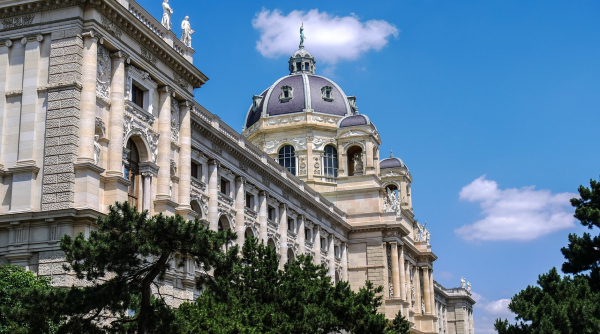Vienna, the enchanting capital of Austria, is a city where imperial history meets modern charm. Known as the “City of Dreams,” it’s a treasure trove of art, music, architecture, and culinary delights. Whether you’re drawn to its grand palaces, world-class museums, or cozy coffeehouses, Vienna promises an unforgettable experience. Here’s everything you need to know to plan your perfect trip.
When Is the Best Time to Go?
Vienna is a year-round destination, but the best time to visit depends on your preferences. Spring (April to May) and fall (September to October) offer mild weather—think highs of 15-20°C (59-68°F)—with fewer crowds and lower prices than peak summer. These seasons are ideal for strolling through the city’s parks and historic streets.
Summer (June to August) brings warm temperatures averaging 25°C (77°F), perfect for outdoor activities like hiking in the Vienna Woods or cruising the Danube. However, it’s the busiest time, so expect higher rates and longer lines.
Winter (November to March) transforms Vienna into a festive wonderland, especially in December with its magical Christmas markets. Temperatures can dip below 0°C (32°F), but the cozy cafés and cultural events make it a charming time to visit, especially if you don’t mind bundling up. For fewer crowds and cheaper rates, January and February are great off-season options.
Weather
Vienna’s climate is continental, with distinct seasons. Summers are warm and sunny, though rain is common (pack an umbrella!). Spring and fall are pleasantly mild but can be unpredictable, with occasional showers. Winters are cold, with average highs around 3°C (37°F) and lows dipping to -5°C (23°F) or below. Snow isn’t guaranteed but adds a fairytale touch when it falls. Check the forecast before you go and plan accordingly!
Currency
Vienna uses the Euro (EUR), the official currency of Austria. Coins come in denominations of 1, 2, 5, 10, 20, and 50 cents, plus 1 and 2 euros, while notes range from 5 to 500 euros. Cards are widely accepted in hotels, restaurants, and shops, but it’s wise to carry some cash for smaller vendors, markets, or tipping (around 5-10% is customary if service isn’t included). ATMs are available, especially in the city center and at major stations like Hauptbahnhof.
What to Pack
Packing for Vienna depends on the season, but versatility is key:
- Spring/Fall: Layers like a light jacket, sweaters, and a waterproof coat, plus comfortable walking shoes.
- Summer: Breathable clothing, sunglasses, sunscreen, and a hat, with a light jacket for cooler evenings.
- Winter: A warm coat, scarf, gloves, hat, and thermal layers—plus boots for snowy days.
- Year-round essentials: A reusable water bottle (Vienna’s tap water is pristine), a small umbrella, and a power adapter (Type F, 230V).
Do-Not-Miss Sights and Attractions
Vienna’s rich history and culture shine through its landmarks:
- Schönbrunn Palace: This Baroque masterpiece, once the summer residence of the Habsburgs, boasts 1,441 rooms and stunning gardens. Don’t skip the Gloriette for panoramic views. For information and tickets, visit website HERE.
- St. Stephen’s Cathedral: A Gothic icon in the heart of the city, its colorful tiled roof and towering spire are unmissable. Climb the South Tower for a breathtaking vista.
- Belvedere Palace: Home to Gustav Klimt’s The Kiss, this elegant palace offers art and architecture in equal measure. For information and tickets, visit website HERE.
- Hofburg Palace: The former imperial residence, now housing museums like the Sisi Museum and the Spanish Riding School’s Lipizzaner performances. For information and tickets, visit website HERE.
- Prater & the Giant Ferris Wheel: A historic amusement park with the iconic Riesenrad, offering sweeping city views. For information and tickets, visit website HERE.
- Naschmarkt: A vibrant open-air market with over 100 stalls—perfect for foodies and souvenir hunters. Additional information HERE.
Best Places to Stay
Vienna offers accommodations for every taste:
- Hotel Sacher Wien (1st District): A luxurious, historic hotel famous for its Sachertorte cake, steps from the State Opera. Perfect for a splurge.
- 25hours Hotel Vienna at MuseumsQuartier (7th District): A quirky, design-forward option near the MuseumsQuartier, with a rooftop bar and playful circus theme.
- Pension Suzanne (1st District): A budget-friendly, family-run guesthouse with charm and a central location near the Opera House.
Book early, especially in summer or December, and consider staying in the 1st District (Innere Stadt) for walkability or the 7th District (Neubau) for a trendy vibe.
Do-Not-Miss Restaurant
Figlmüller: Known as the “Home of the Schnitzel,” this legendary spot in the 1st District serves up massive, perfectly crisp Wiener Schnitzel with a side of potato salad. Reservations are a must—its reputation draws crowds year-round. Pair it with a glass of local Grüner Veltliner wine for the full Viennese experience.
Safety Concerns
Vienna is one of Europe’s safest capitals, consistently ranking high for quality of life. Violent crime is rare, but pickpocketing can occur in tourist-heavy areas like the Prater, Naschmarkt, or on public transport. Keep bags zipped and valuables secure. Walking alone at night is generally safe, even for solo travelers, thanks to well-lit streets and a calm atmosphere. Use common sense, and you’ll have no worries.
Best Transportation in the Region
Vienna’s public transport system is a traveler’s dream—efficient, affordable, and comprehensive:
- U-Bahn (Subway), trams, and buses run frequently, connecting the city center to outer districts. A single ticket costs €2.40, but a 24-hour pass (€8) or 72-hour pass (€17.10) offers unlimited travel.
- Vienna City Card: Combines unlimited transport with discounts on attractions—great value at €17-29 depending on duration.
- Biking: Rent a WienMobil bike (€0.65 per half-hour) from one of 185 docks for a scenic ride along the Danube or through parks.
- Taxis/Uber: Reliable but pricier—taxi fares start at €4, plus €1.85 per mile.
From Vienna International Airport (VIE), take the City Airport Train (CAT) to Wien Mitte (€12, 16 minutes) or the cheaper S7 train (€4.40, 25 minutes). For day trips—like to Bratislava (1 hour by train)—use ÖBB trains or FlixBus.
Traveler Tips
- Coffeehouse Culture: Don’t rush—linger in a traditional café like Café Central or Café Hawelka. Order a melange (similar to a cappuccino) and soak in the ambiance.
- Language: German is the official language, but English is widely spoken. Learn “danke” (thank you) and “bitte” (please) to charm locals.
- Tipping: Service is included, but rounding up the bill or adding 5-10% is appreciated.
- Sunday Closures: Many shops shut on Sundays—plan grocery runs or souvenirs for weekdays.
- Walk the Ringstrasse: This grand boulevard circles the 1st District, passing landmarks like the Opera House and Parliament. Tram 1 or 2 offers a scenic loop.
- Vienna Pass: If you’re museum-hopping, this pass (€76 for one day) covers 60+ attractions and can save you money.
Vienna blends the elegance of its imperial past with a modern, livable vibe. Whether you’re sipping coffee in a centuries-old café, marveling at Klimt’s masterpieces, or waltzing through a palace, this city will captivate you. Plan your trip with these tips, and let Vienna’s magic unfold!


